The Necessary Architecture
Hydrogeological Risk
and Infrastructure in the Spluga Valley.
Methods, strategies and projects
for securing and regenerating a specific mountain territory.
Italy is a vulnerable country, constantly exposed to the risk of hydrogeological problems, where the obsolescence of infrastructures tends to increasingly become cause for concern, threatening built-up areas as well as environmental, historical and cultural heritage. Landslides and floods take the highest toll in terms of casualties and damages, ranging second after earthquakes.
Thanks to an increasing number of studies and the drawing up of detailed catalogues and inventories, it is now possible to realize the complexity and geographical extension of this emergency. The concentration of such phenomena is paramount in inner areas, especially those where mountains are present, thus exposing transport routes to constant danger.
Our testing area is an Alpine road (a section of state road SS36 connecting the small town of Chiavenna and the Spluga pass in the Sondrio province), where it is necessary to mitigate the risk of traffic disruption.
Making use of a case study, our thesis puts forward an implementation methodology in situations where hydrogeological risk and renovation requirements coexist as parallel emergencies. The aim is solving safety concerns and simultaneously trying to build architectures capable of regenerating local areas, going beyond the purely technical and infrastructural intervention, solely aimed at the immediate solution of the safety problem, while disregarding long term prospects and other needs of a given area.
Making use of a case study, our thesis puts forward an implementation methodology in situations where hydrogeological risk and renovation requirements coexist as parallel emergencies. The aim is solving safety concerns and simultaneously trying to build architectures capable of regenerating local areas, going beyond the purely technical and infrastructural intervention, solely aimed at the immediate solution of the safety problem, while disregarding long term prospects and other needs of a given area.
Securing is an essential priority to guarantee accessibility, but it certainly is not the only need of inner areas: the occurrence of mitigating the threat of hydrogeological risk is exploited in order to define spaces, functions and artifacts helping people to live in those areas thanks to the tools and methodologies of architecture.
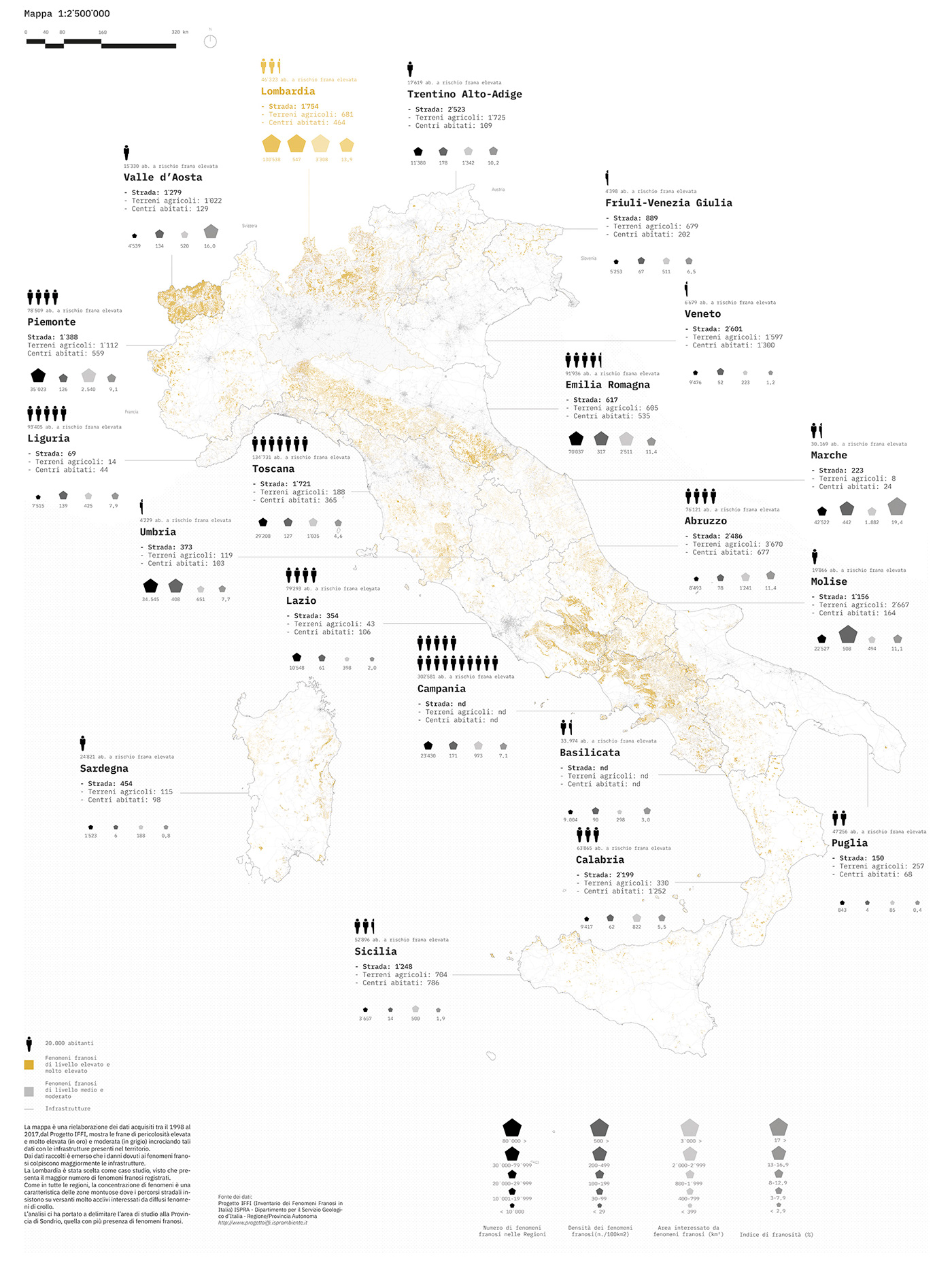
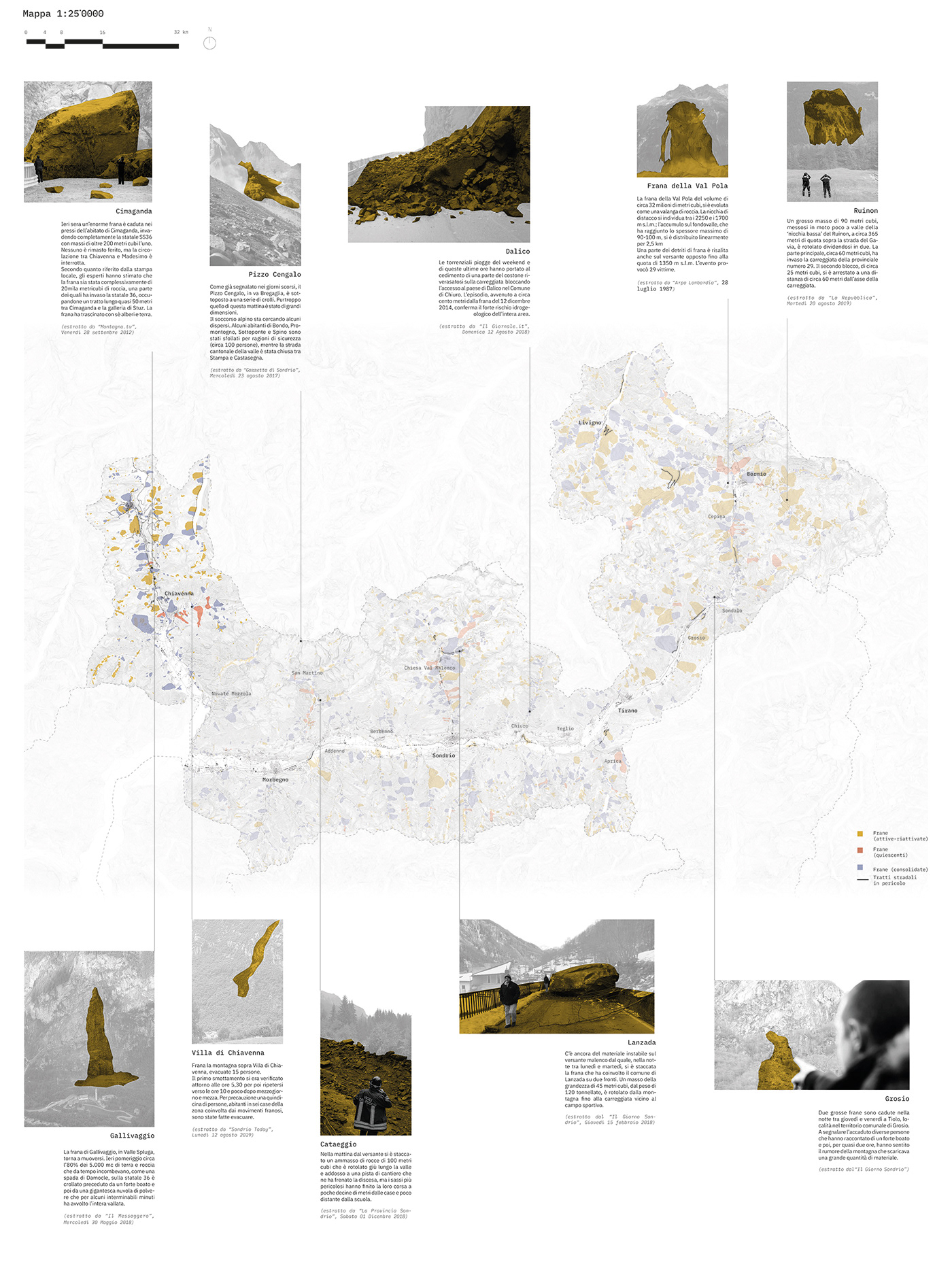

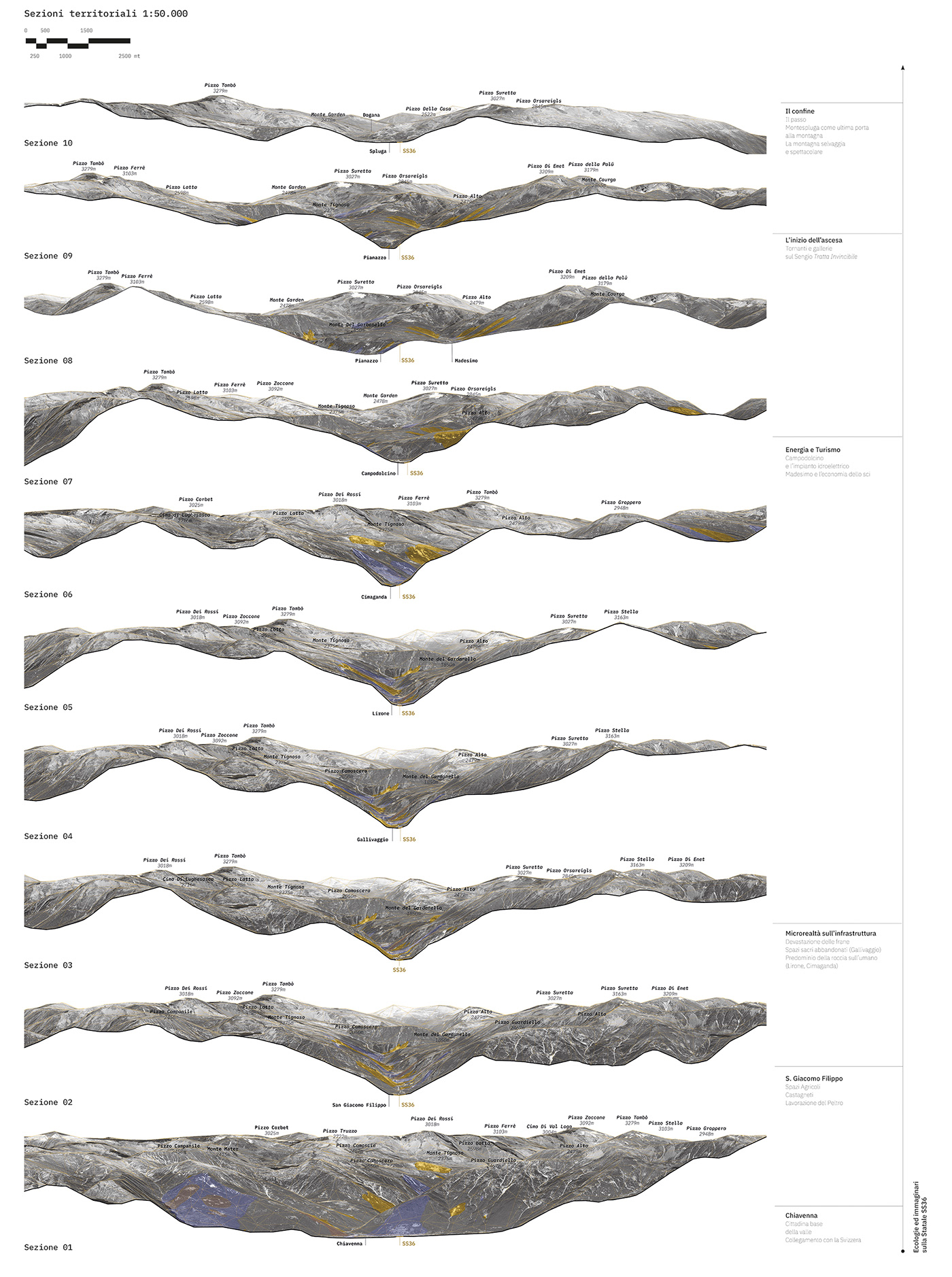
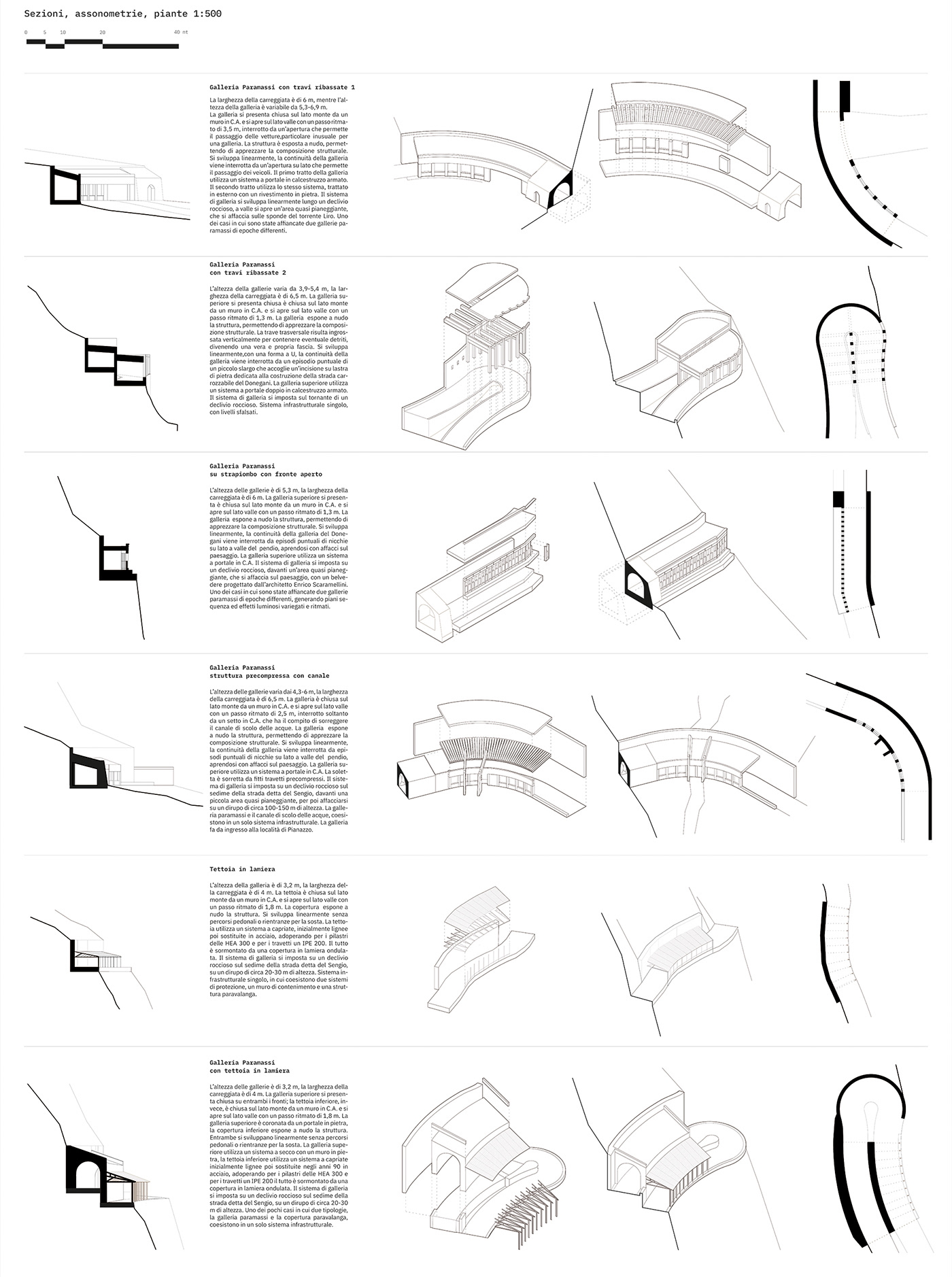
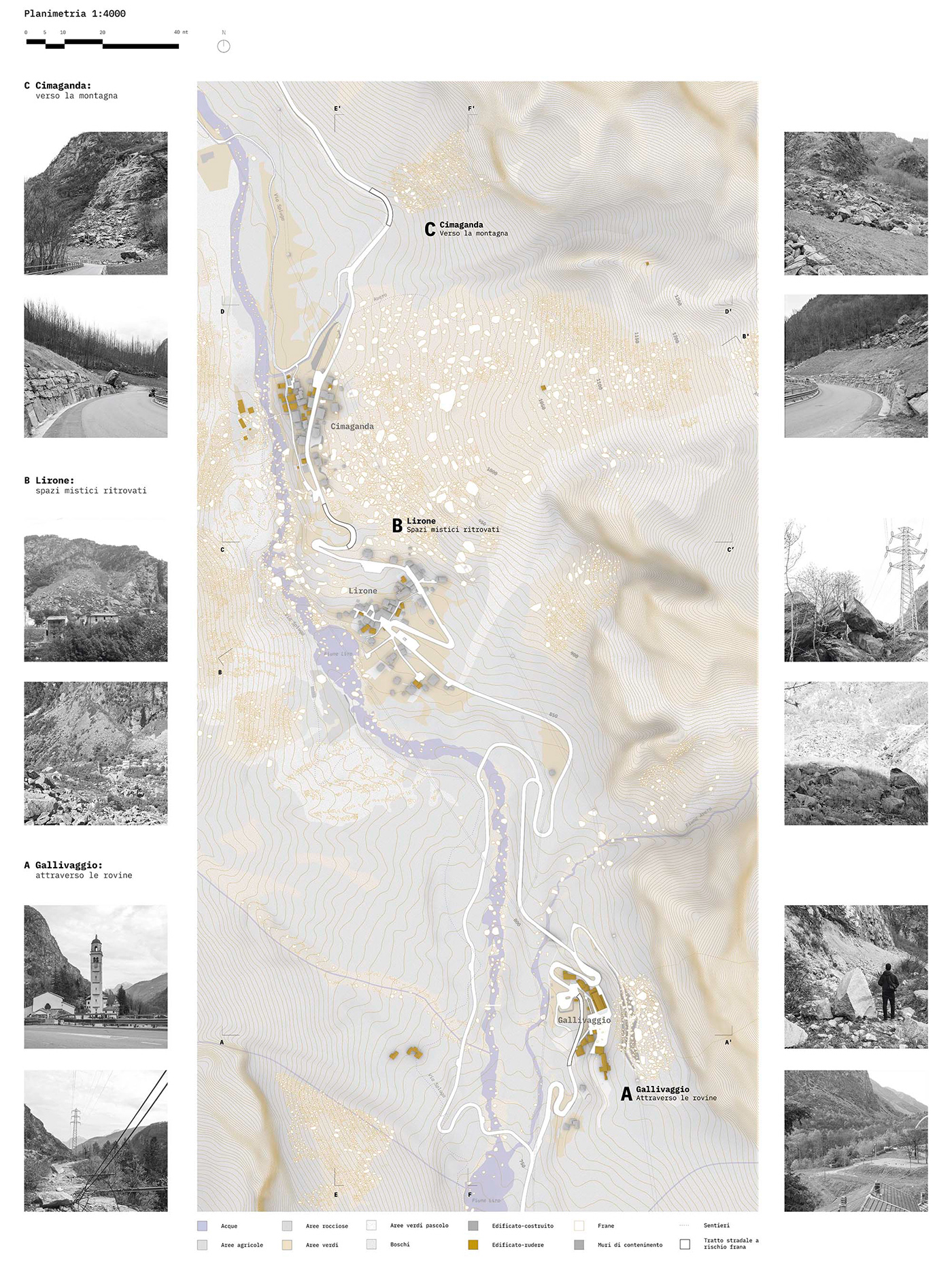













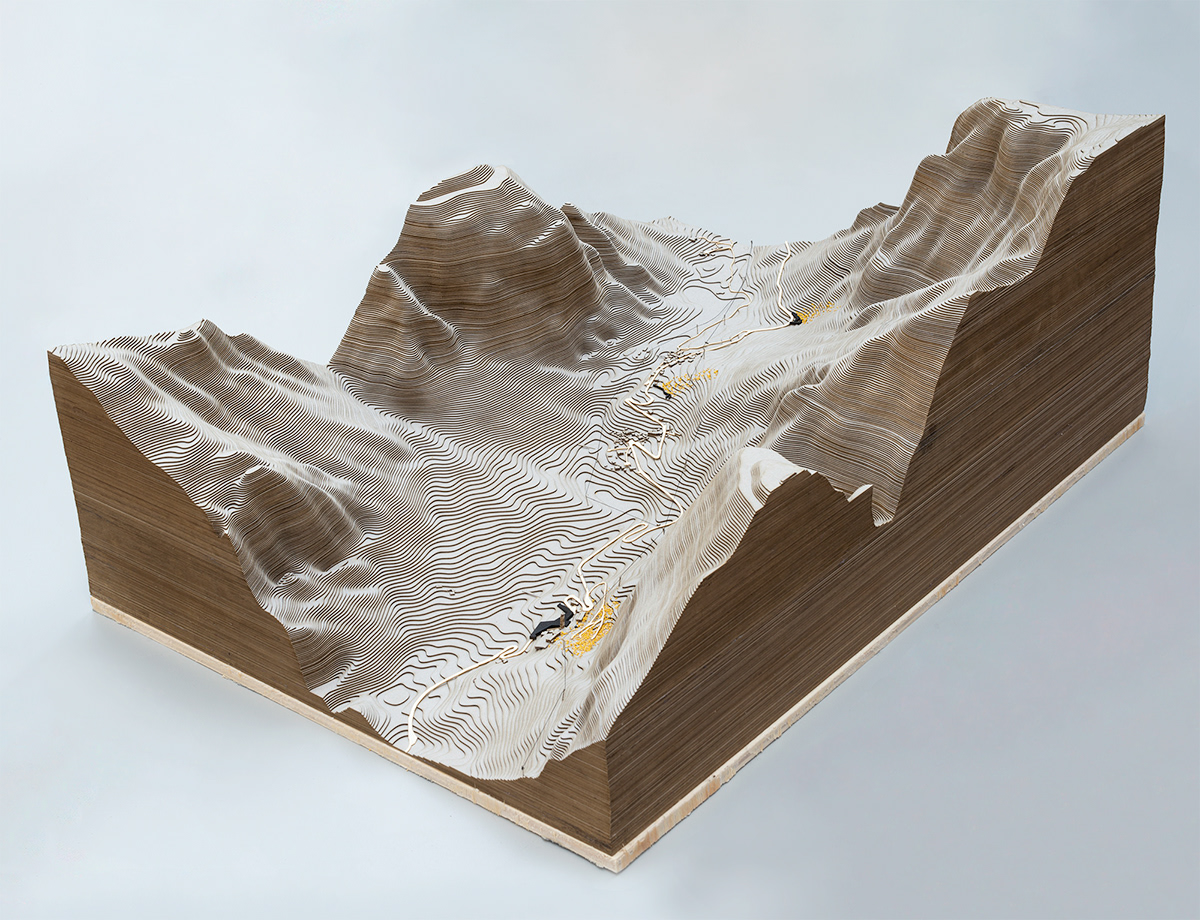
Gallivaggio: through the ruins of a Sanctuary
The first project is part of the SS36 state road nearby the Gallivaggio Sanctuary, dating back to the 15th century, today in a state of complete devastation and abandonment after repeated landslides, since May 2018.
The urgency to protect the fundamental stretch of road through an artificial gallery, becomes an opportunity to create new spaces for contemporary travelers on the Via Spluga and reinterpret the third landscape between nature and ruin, crossed by infrastructure. The gallery is divided in to three main bodies connected together by means of stairs and ramps. Going up the road, a covered market opens for the temporary sale of local products, accessible by trucks and equipped with accessory spaces.
Close to the old historical wall, partially used for the support of the roof, there is the parking for visitors: an artificial climbing wall, a ramp that leads to the covered market through an underpass and a hidden staircase leading to a point of observation of the ruins, they characterize a space that otherwise would remain merely functional. In conclusion, at the safest point from falling rocks, a refreshment area opens onto the valley.
The architecture appears monolithic, both for structural needs, and to recreate the spatiality and perception of the rock and within it to decline the elements and materials of the rockfall infrastructure.

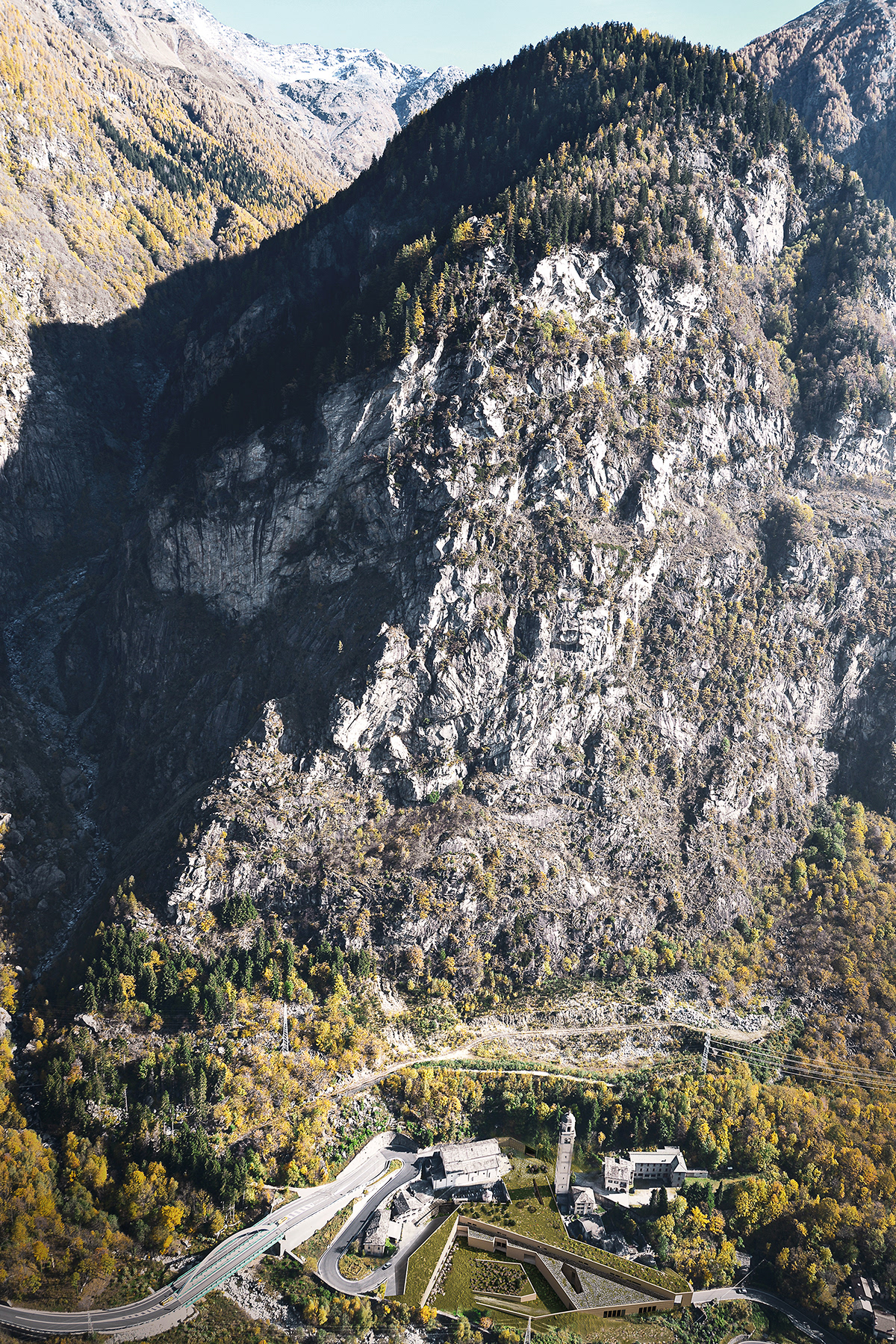
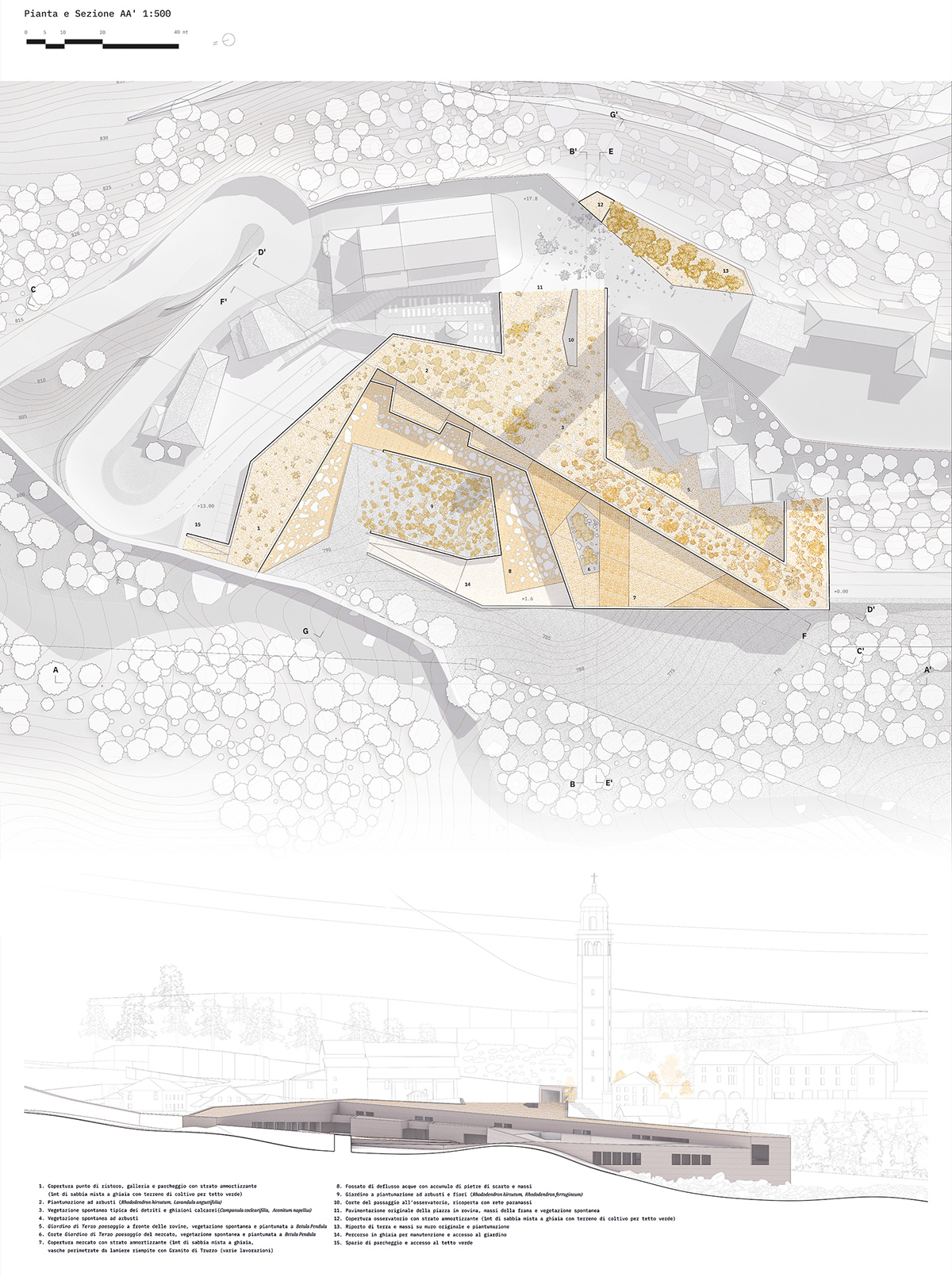
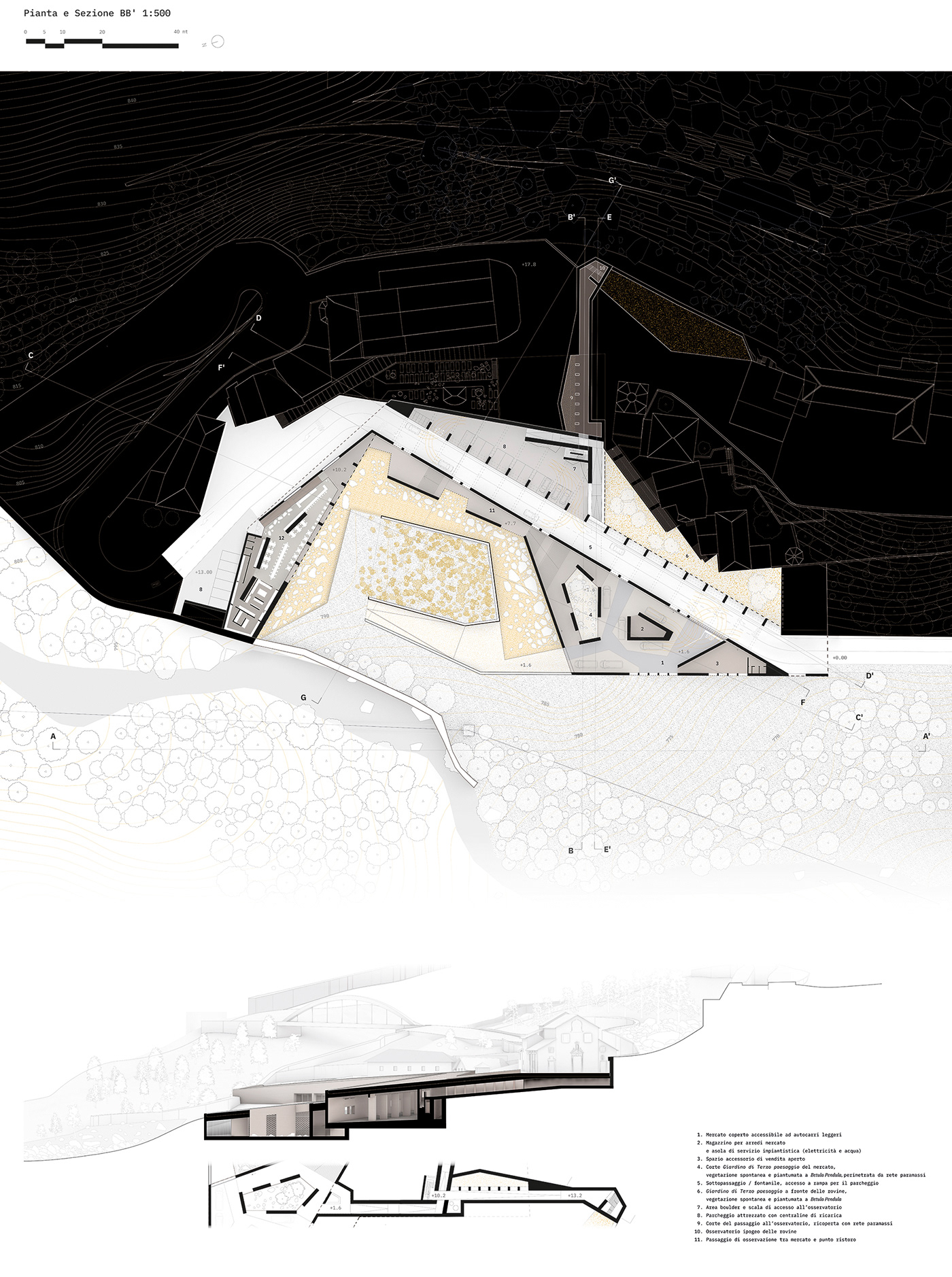


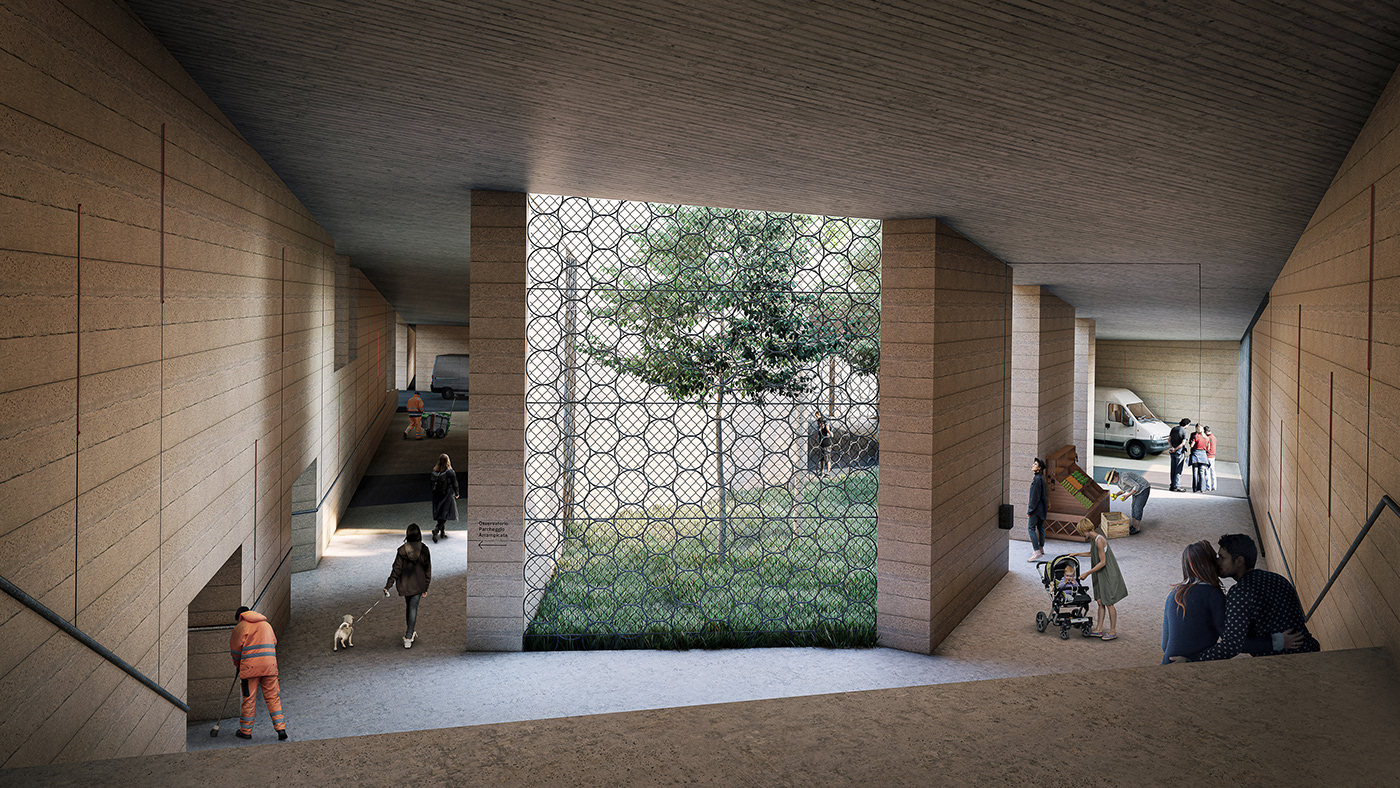
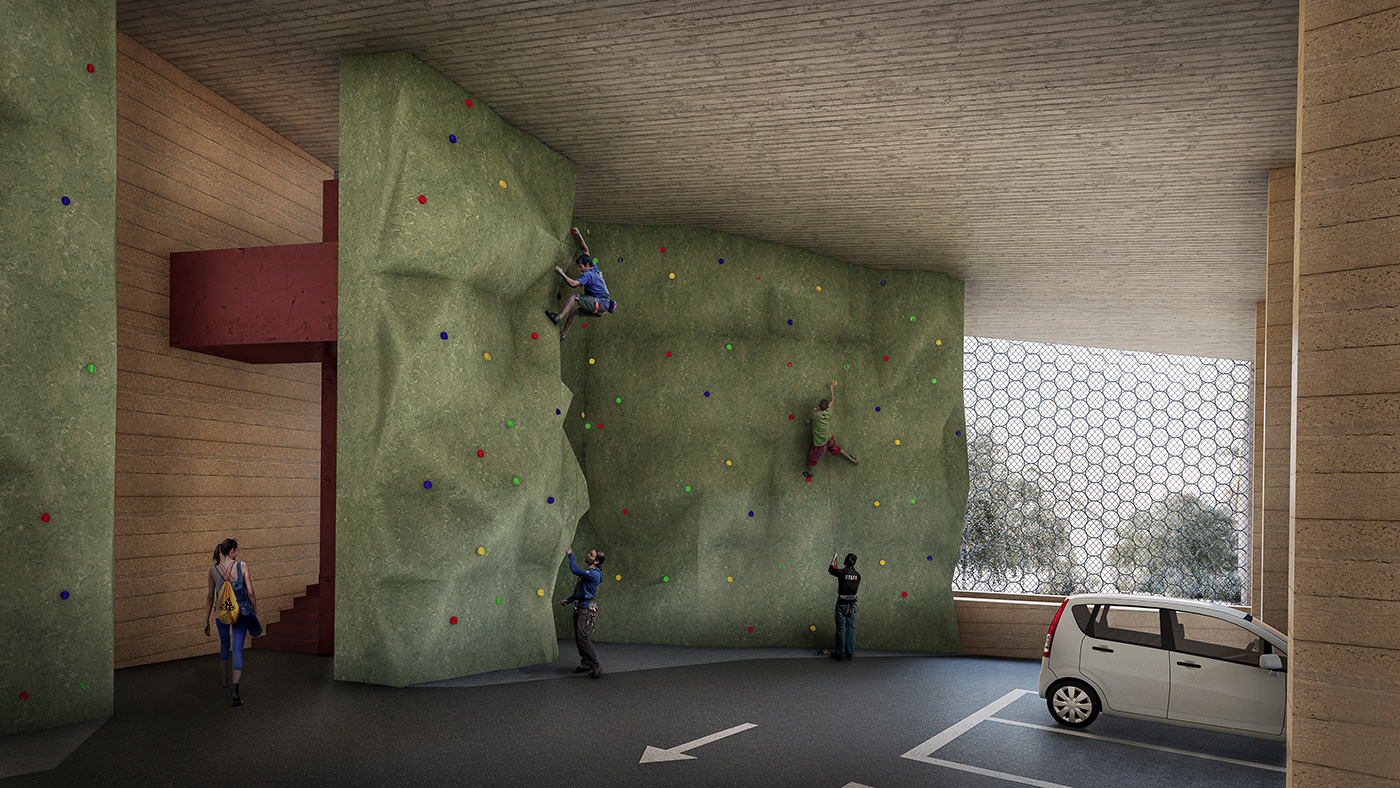
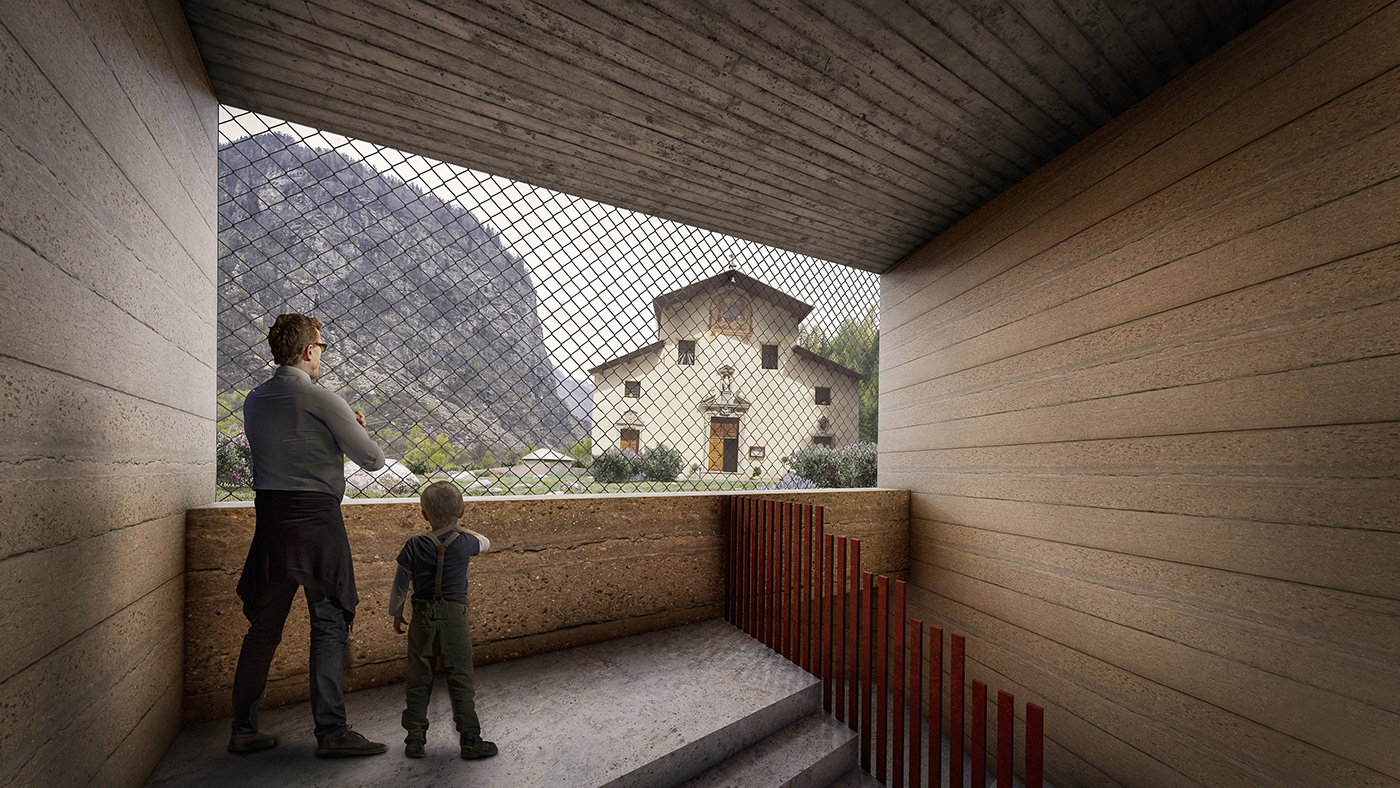

Lirone: rediscovered sublime
The second project is set on a huge expanse of rocks threatens traffic and inhabited areas between the village of Lirone and Cimaganda. At the most looming point, where the sublime and the disorientation given by the rocks are most felt, a wall is made. After a broken sections, the path continues throuhg a narrow covered passage, and then reopens in a trapezoidal room, oriented towards the ruins of Gallivaggio. Wide nets with intertwined rings hang embedded into an inclined reinforced concrete wall. A continuous seat marks the lower side of the wall and the flooring is thrown irregularly around the huge boulders. The project hybridizes two solutions for the containment of danger and tries to dare a poetics through an architecture that aspires to the Sacred.

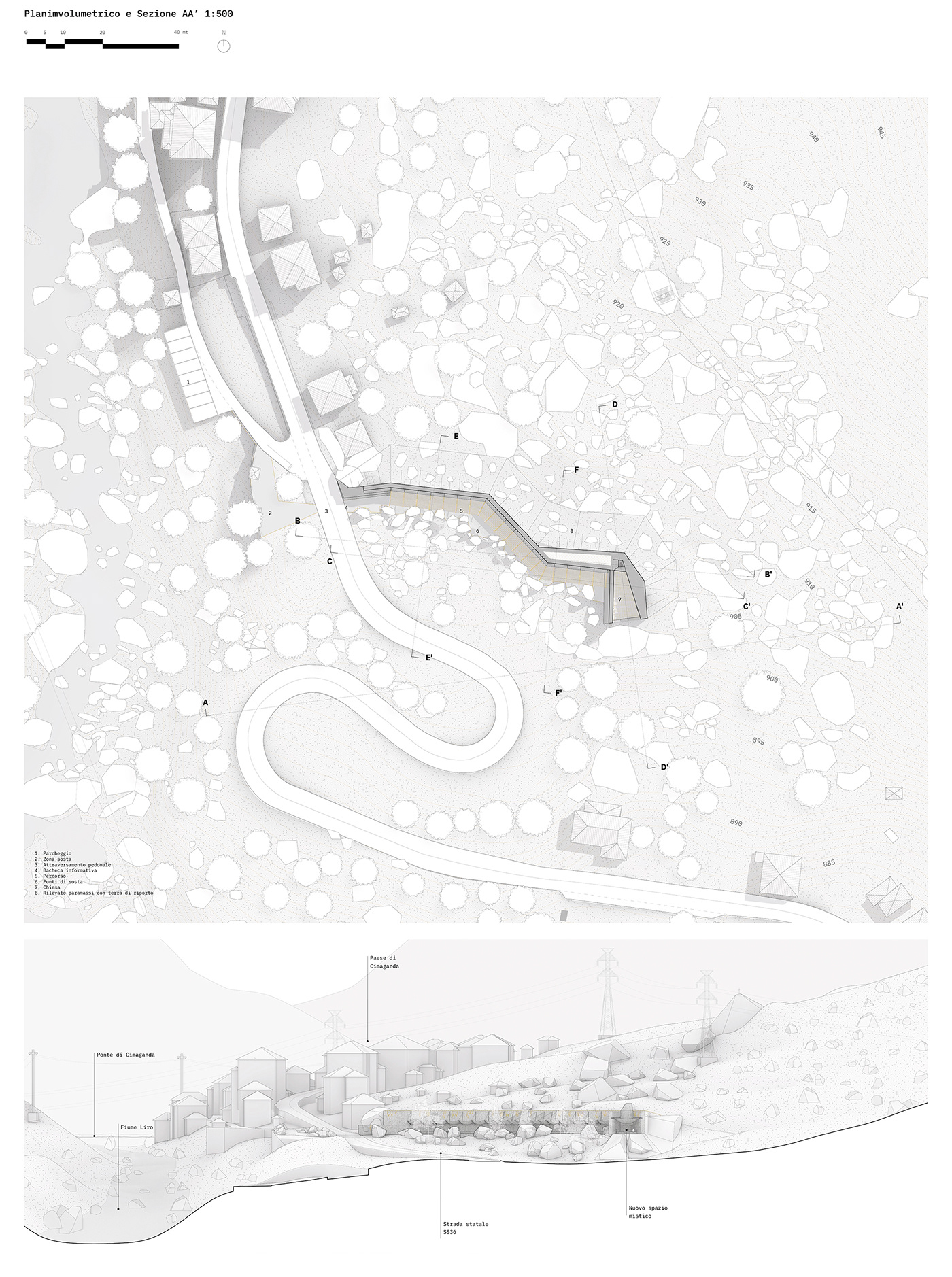

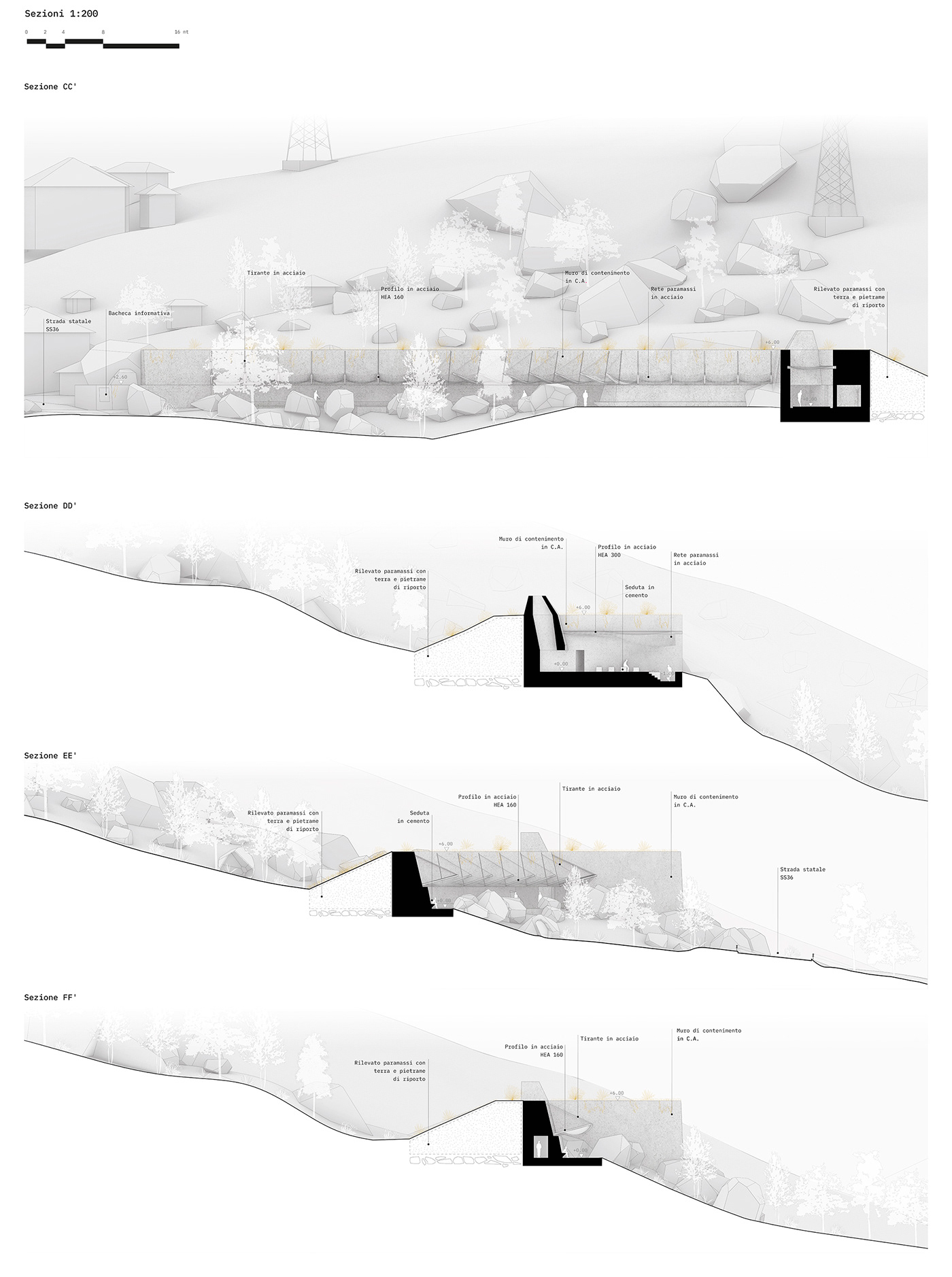


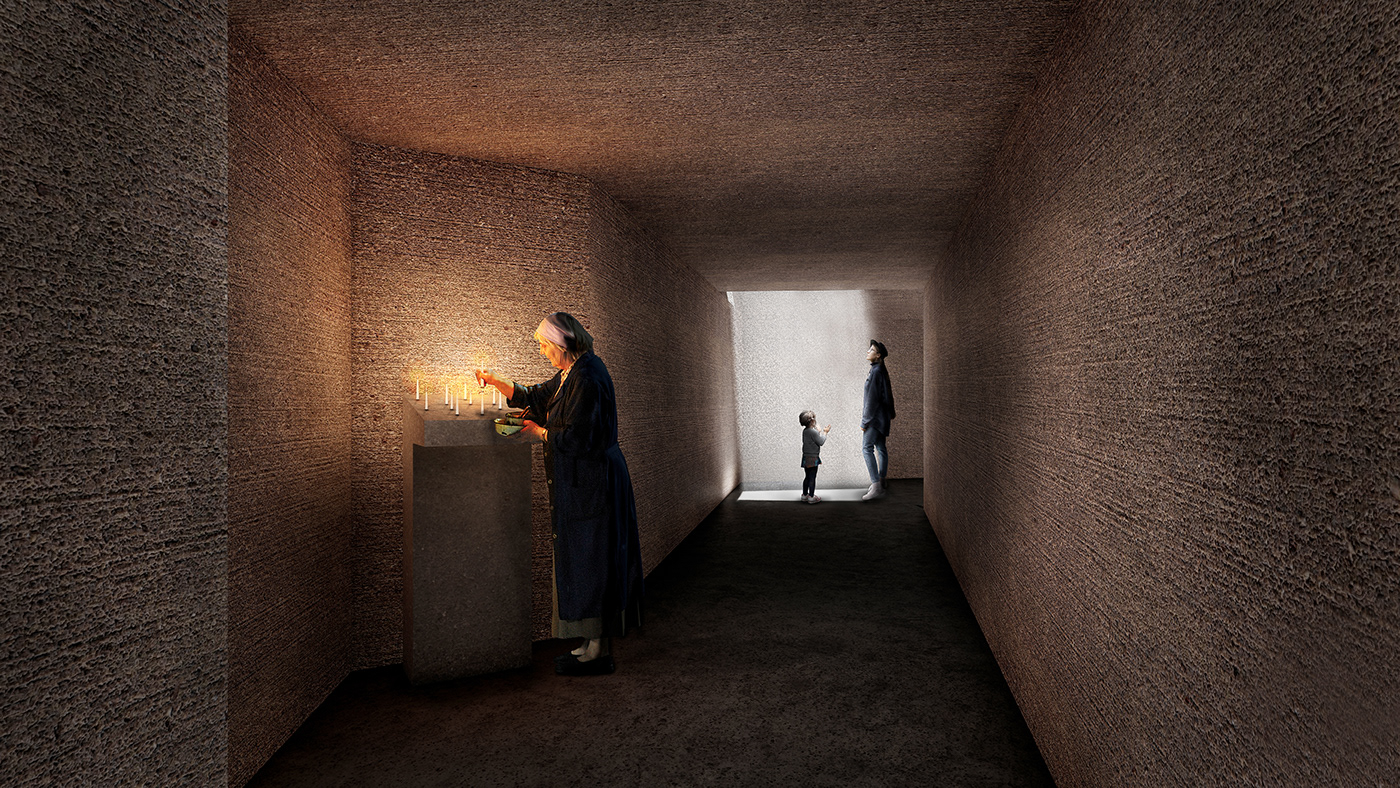

Cimaganda: towards the mountains
The third project develops along a curve, after the village of Cimaganda, which owes its name to the paleo-landslide that characterizes the surrounding wild landscape. The new mass fall occurred in 2012, cutting off all communication with the valley and subsequently arranged with an embankment. The village has always attracted sportsmen and hikers heading towards the Spluga pass. The theme of the found rockfall now becomes an opportunity for small support spaces and conviviality for passing visitors. The new architectures host a small cycle-workshop do-it-yourself and a fountain, which acts as an entrance door and link to the path to Avero.
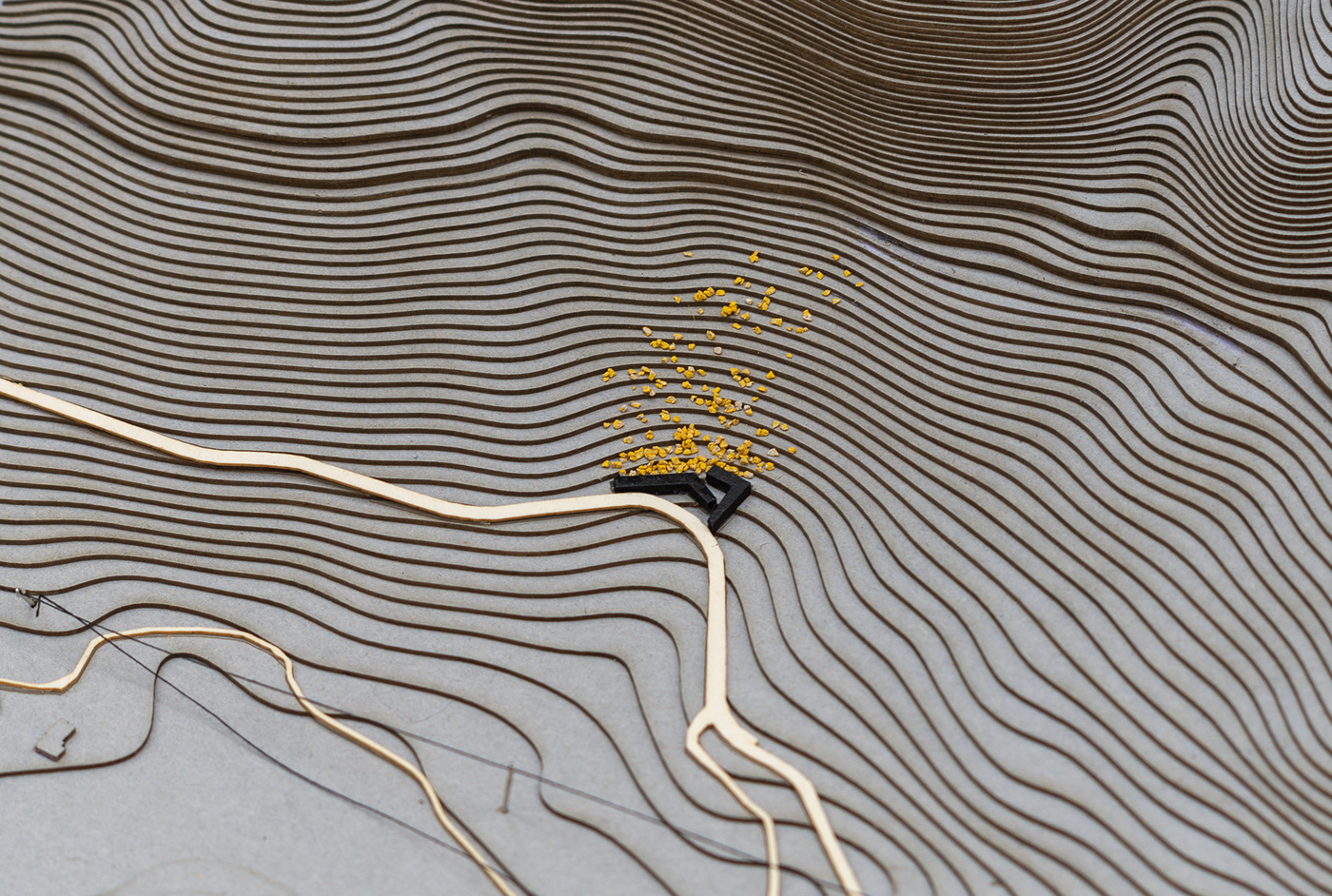

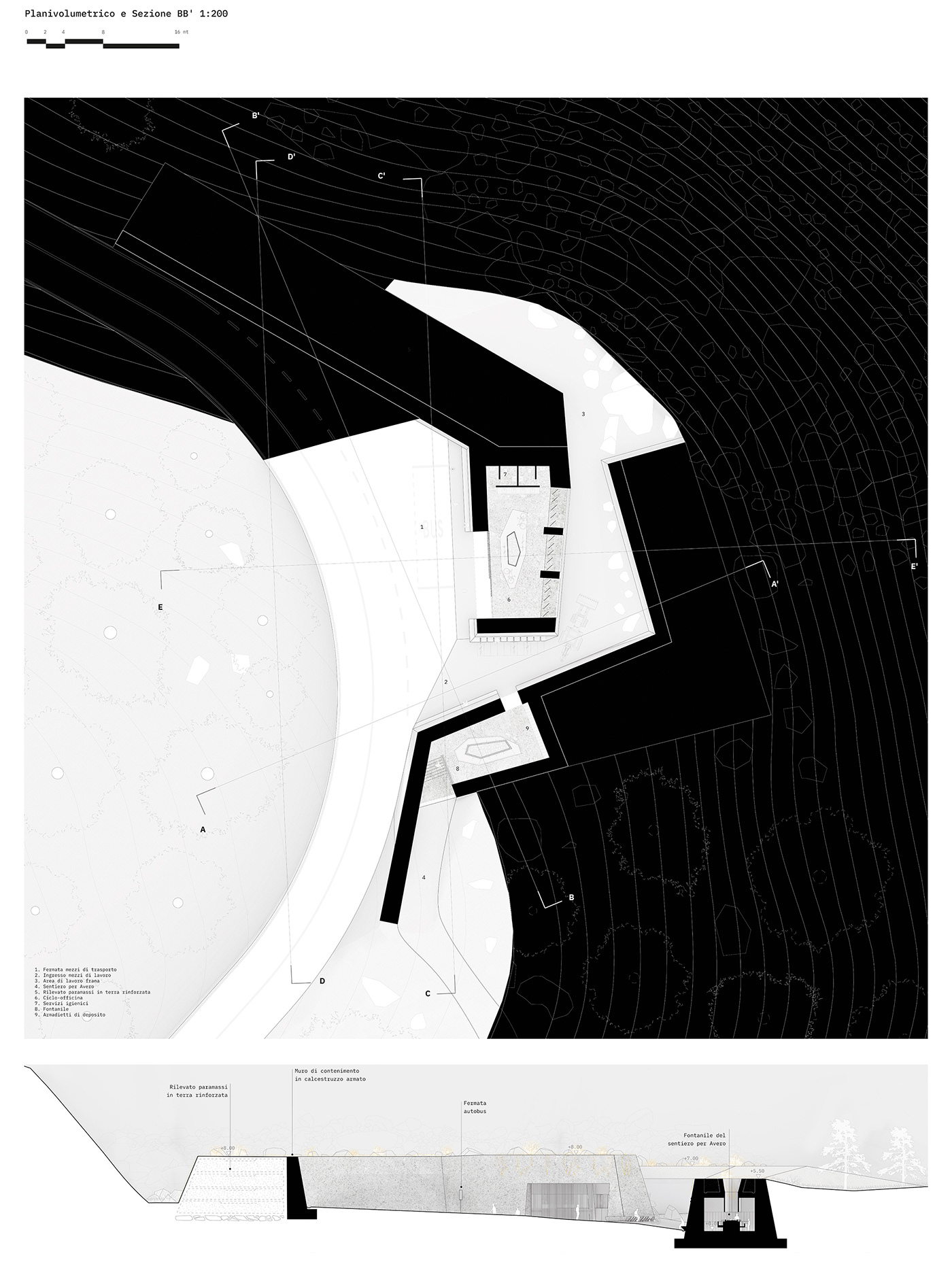
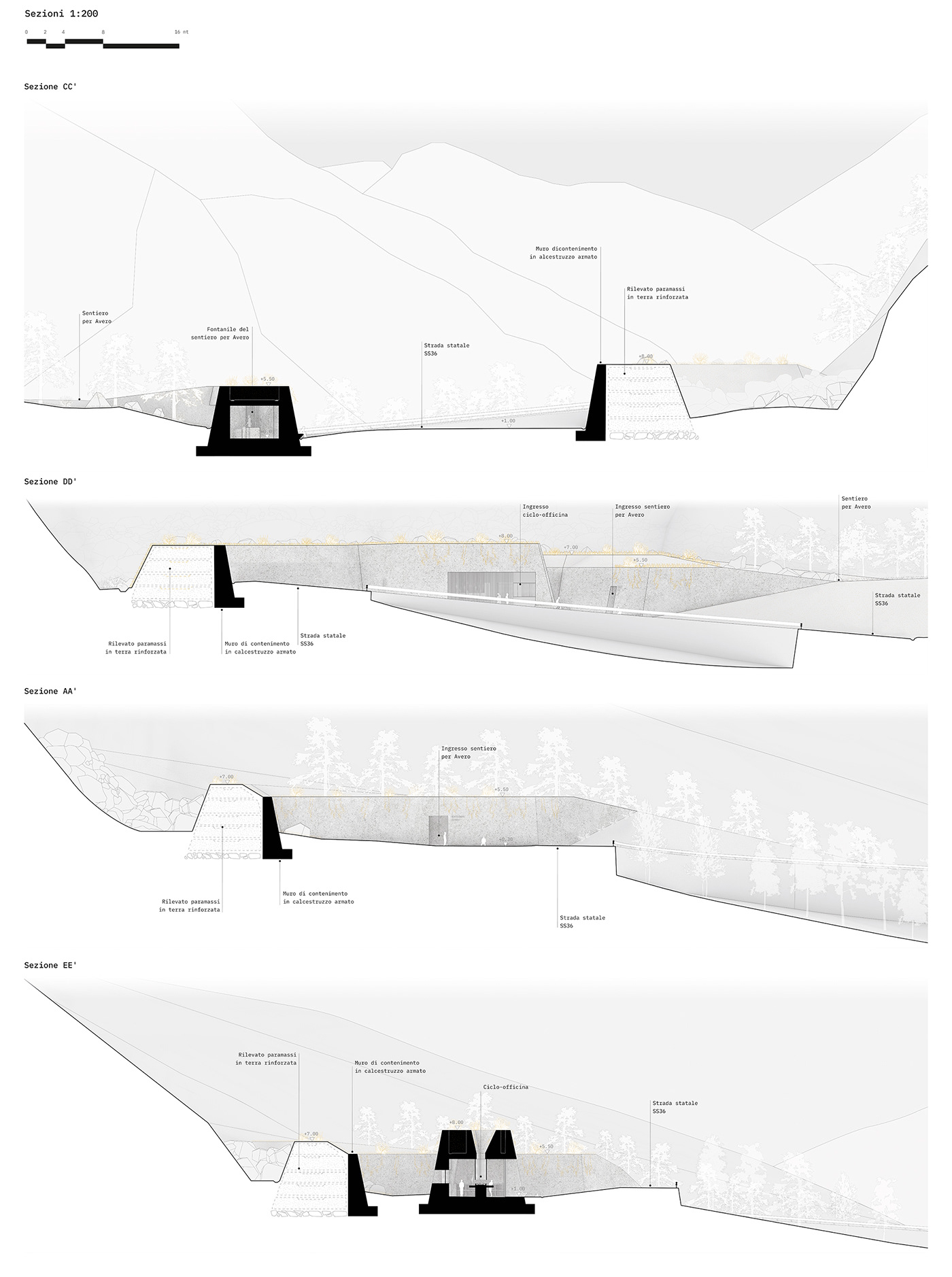
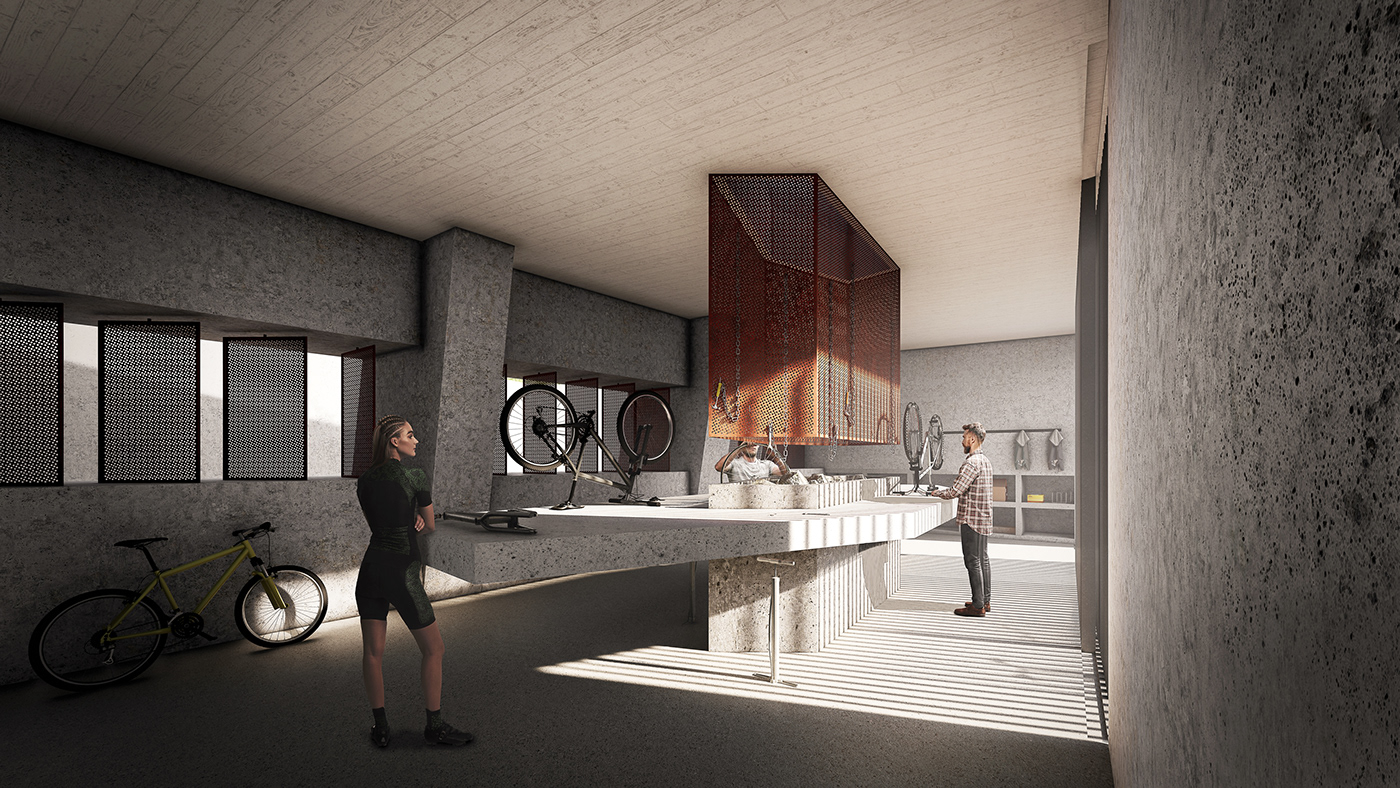

Research Book
242 pages book, 25x19 cm






























































































































Thanks for watching :)










